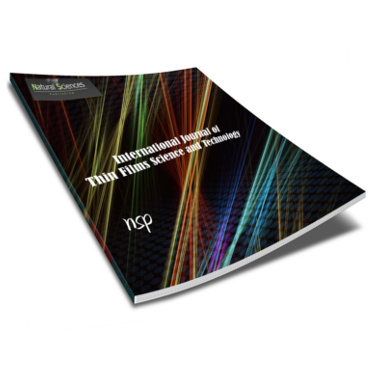International Journal of Thin Film Science and Technology

Abstract
This study aims to optimize cathodic sputtering techniques to generate high-quality thin films for advanced applications. Cathodic sputtering is a widely recognized deposition method renowned for its ability to create exceptional thin films, thus holding great potential for enhancing the performance of PV devices. This research focuses on an in-depth examination of materials such as cadmium sulfide, copper-indium-gallium-selenium, and perovskites, all of which possess optical, electrical, and structural properties well-suited for PV applications. The primary goal of this study is to advance our understanding of cathodic sputtering by investigating the key parameters that significantly impact the deposition of thin films. To assess their respective effects, we thoroughly analyzed various factors, including vacuum chamber energy, incidence angles, and gas composition. Our findings unequivocally demonstrate that using Argon gas yields superior sputtering results compared to Nitrogen and Xenon. Furthermore, we observed a direct correlation between increasing incidence angle and bombardment energy, leading to a proportional enhancement in the sputtering yield until an optimal value is attained. These critical parameters are pivotal in determining the quality of the resulting thin films. Importantly, our research findings align harmoniously with prior studies, thus validating our calculations and conclusions.
Recommended Citation
Koulali, Mostefa and Bouazza, Abdelkader
(2024)
"Enhancing the Sputtering Process with Plasma-Assisted Electrical Discharge for Thin Film Fabrication in Advanced Applications,"
International Journal of Thin Film Science and Technology: Vol. 13
:
Iss.
1
, PP -.
Available at:
https://digitalcommons.aaru.edu.jo/ijtfst/vol13/iss1/2

